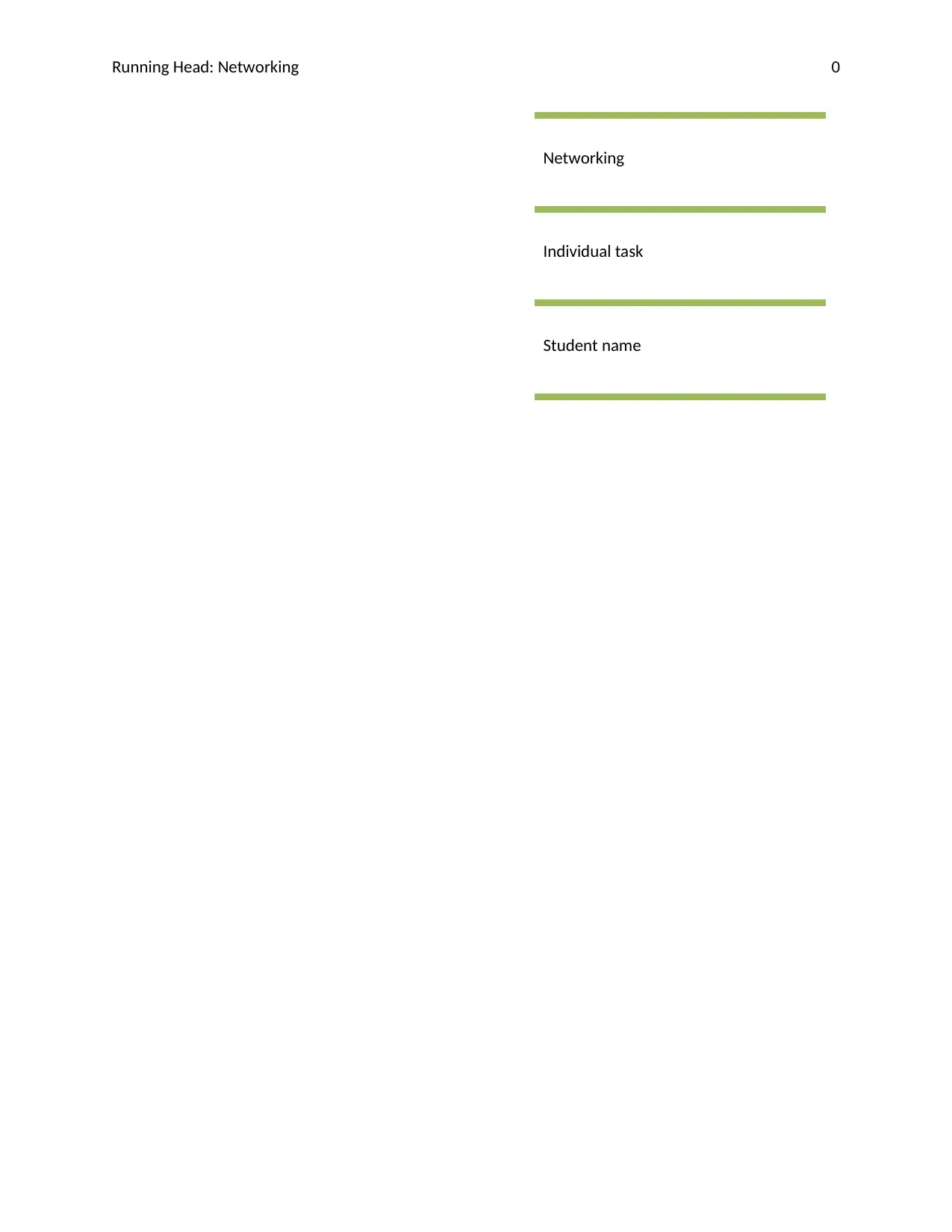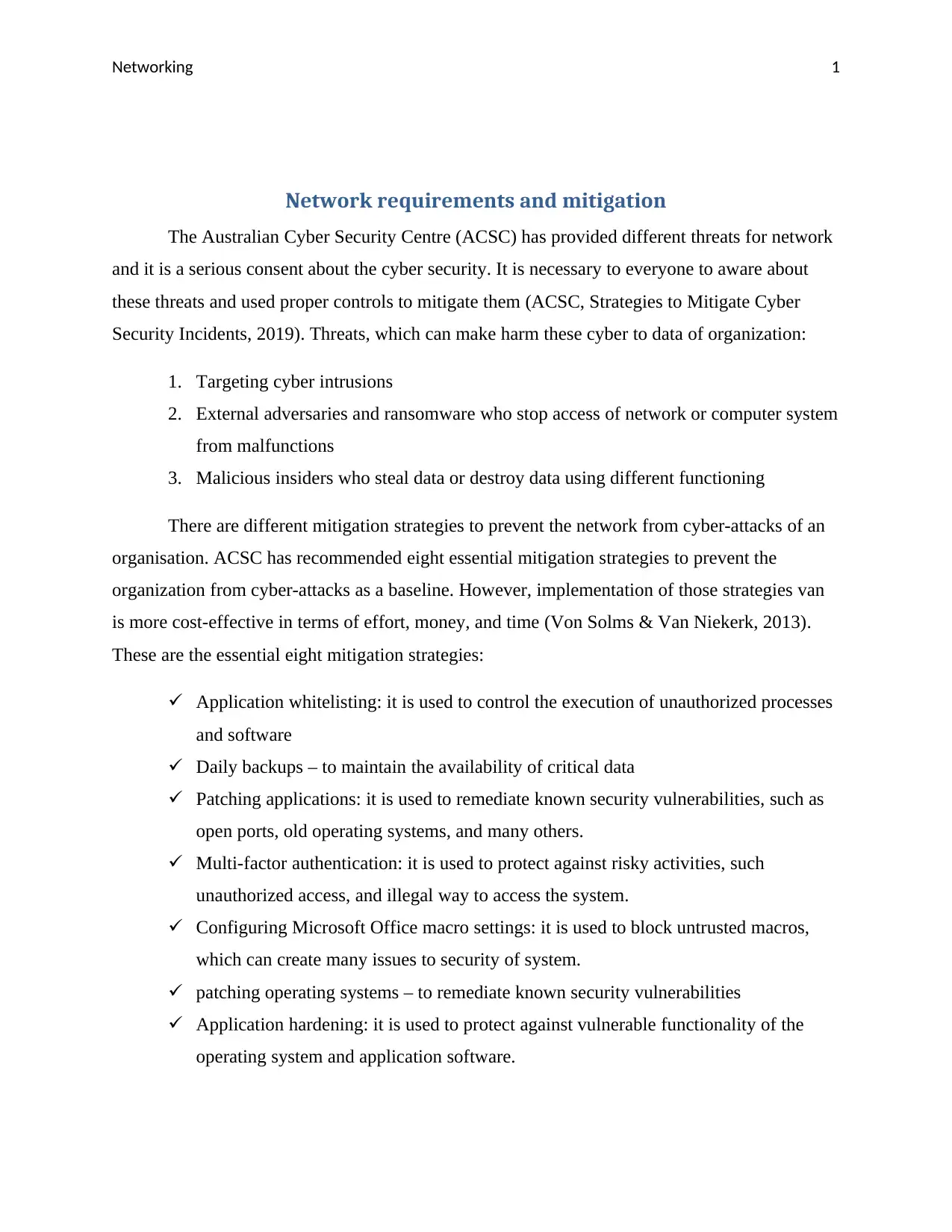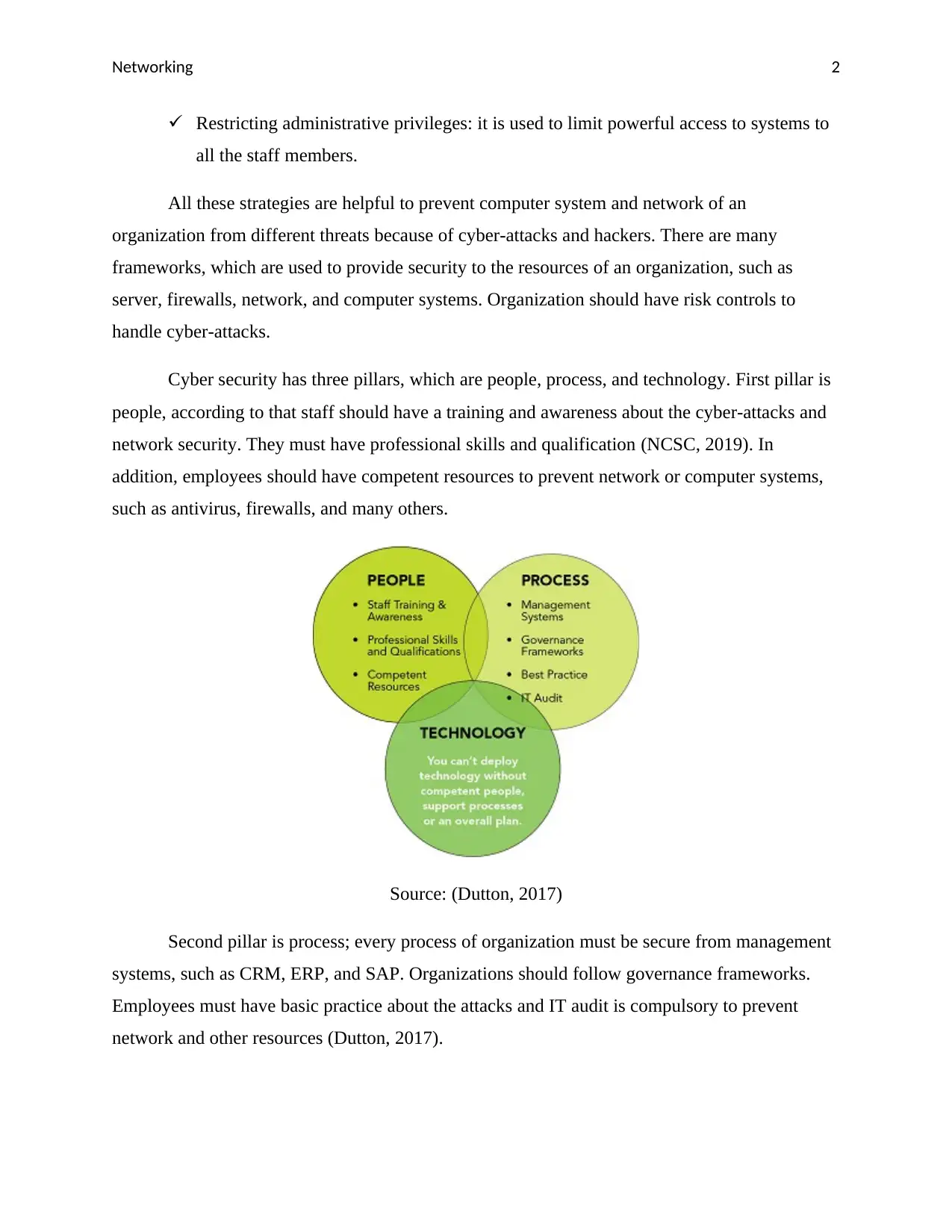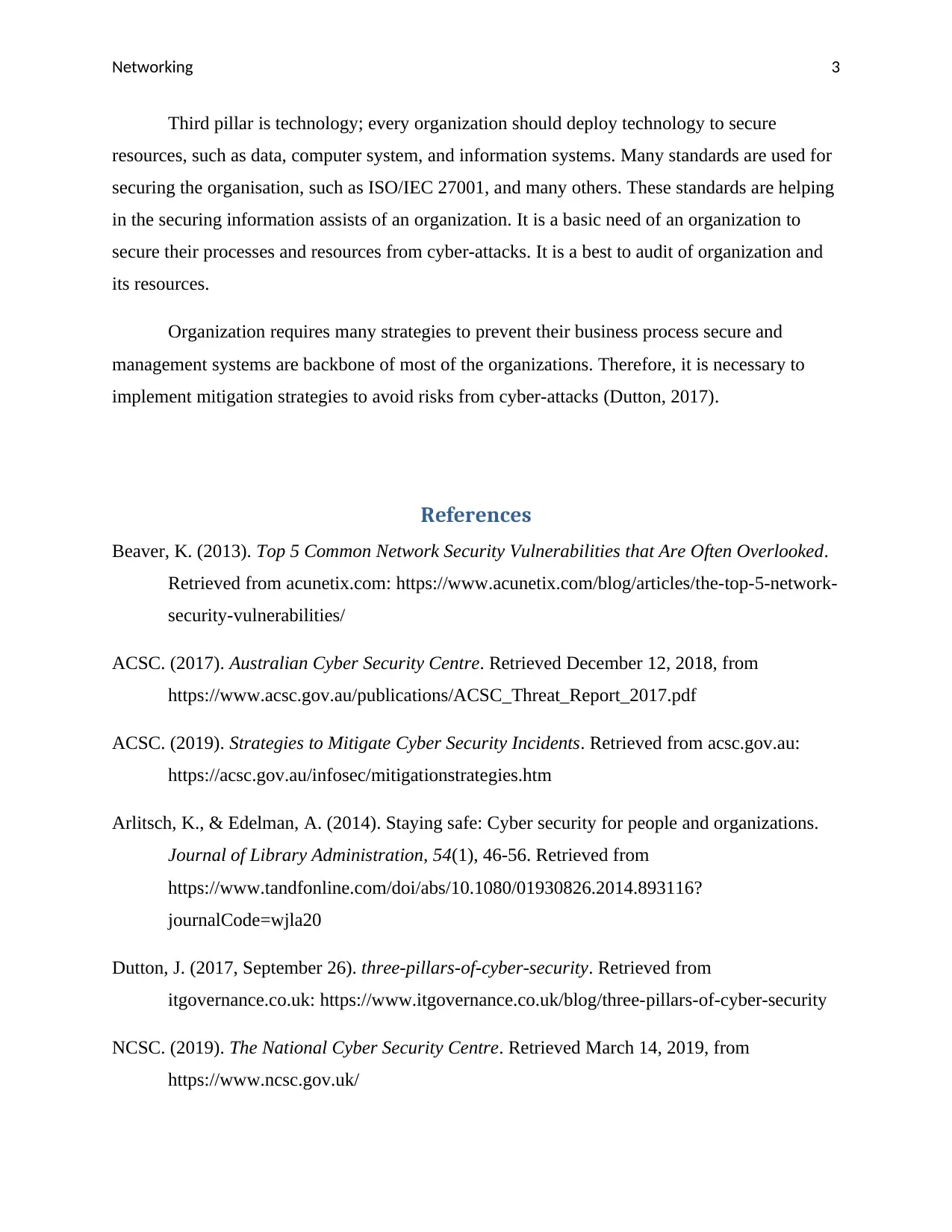Network Security: Threats, Mitigation Strategies, and Frameworks
VerifiedAdded on 2023/01/12
|5
|854
|95
Homework Assignment
AI Summary
This assignment delves into the critical aspects of network security, focusing on the threats faced by organizations and the strategies to mitigate them. It begins by outlining various cyber threats, including targeted intrusions, external adversaries, and malicious insiders, and emphasizes the importance of awareness and proactive measures. The assignment then details the eight essential mitigation strategies recommended by the Australian Cyber Security Centre (ACSC), such as application whitelisting, daily backups, patching applications, multi-factor authentication, configuring Microsoft Office macro settings, patching operating systems, application hardening, and restricting administrative privileges. Furthermore, it discusses the three pillars of cybersecurity: people, process, and technology, highlighting the significance of staff training, secure processes, and the deployment of appropriate technologies and standards like ISO/IEC 27001. The assignment underscores the need for risk controls and frameworks to safeguard organizational resources, emphasizing the importance of regular audits and the implementation of robust mitigation strategies to avoid risks associated with cyber-attacks. Finally, it provides a comprehensive list of references to support the information presented.
1 out of 5












![[object Object]](/_next/static/media/star-bottom.7253800d.svg)